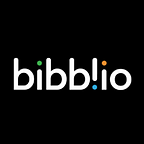Why this story is not the most important — it’s the next one
The average person spends more time on social media than they do eating, drinking, socializing or grooming, and even then, we find ourselves scrolling through our feeds at the same time. We’re talking two ‘social’ hours every day.
The amount of time people spend on social media is a big deal and is also increasing every year. Many users arrive at media sites through shared articles and the ads you put out there, with Facebook continuing to dominate social media referrals. The fastest growing source of social media traffic is Instagram.
Not through the front door
People coming in from social media don’t land on your homepage. Direct traffic to your front door is basically dwarfed by social and search. Nowadays, even the overall traffic to homepages only makes up around one-fifth of the total.
“The trend across media is the slow decline of direct traffic to homepages”
— M. Scott Havens, global head of digital for Bloomberg Media
Your homepage is not the most important page any more, your content pages are. Furthermore, the first page that visitors land on is not the most important either, it’s the second one.
Here’s why.
The most important
In a great podcast by Vox, the interviewee and founder of Stratechery, Ben Thompson explains the importance of the second post:
“The most important article on your blog is the second article someone reads. Say someone follows a link and they read an article and think, ‘Wow, that’s pretty good.’ (…) and they read another article, if that next article is also really good, then you’ve established something meaningful, and you have an inkling of a relationship with that reader.”
The move that makes or breaks that inkling is your visitor returning to their feed, or them staying on your site, and clicking on the second article.
Our attention
Talking to a lead developer at one of our online media customers, we discovered that only 10% of visits were to their homepage. The vast majority of user time was on their content pages. No surprise here.
However, around 90% of developer time was spent on the homepage and general navigation tools, rather than on the journey from one article to another.
The odd thing here is how many of us still only deck out the homepage like a stately front door, expecting the majority of our visitors to walk up to the front.
This needs to change. In order to turn your visitors into regulars, we need to start improving the odds someone will click on your next article.
Creating a journey
As you can also gather from Thompson’s quote, it all starts with quality content. This is obviously true for the article on the visitors’ landing page as well as for the articles you select as candidates for that most important second one.
Having said that, if you’re in it for a meaningful connection, there’s really not much use in offering paid-for-clickbait at the bottom of your page to scrape some sort of small profit. Those clicks lead your visitors away from your content. No second article at all.
Another downside is that those ‘suggestions from the web’ rarely build a positive brand association. Yes, there are sites that want to be associated with revelations such as “Tiger Woods’ Daughter Was a Cute Kid, But What She Looks Like Now is Insane”. But for everyone else, there is a better way. A flight to higher ground.
Relevant internal suggestions
Visitors don’t know you have more great content unless they see it. The focus should be on putting your own content in front of them, using elegantly designed features on those pages.
In other industries, relevant internal suggestions are at the core of many content businesses. For platforms such as Netflix, YouTube and Spotify, recommendations are by far driving most of the audience engagement.
Looking closely at Netflix, their recommender system is used on most screens of the product beyond the homepage, and in total influences choice for about 80% of hours streamed (with the rest coming from search). The combined effect of personalization and recommendations — which results in high engagement levels and low churn — saves Netflix more than $1B per year.
Recommendations work when they lead to quality content, are relevant and offer some insight into why you’re offered what you see. These kind of content recommendations are trustworthy, and frankly, we need more of that.
With lots of people coming to your site through social media, it might be time to look at embedding a recommendation engine that makes people want to click on your next article.
If paid-for-clickbait is not your preferred monetization strategy, help your visitors discover something great, and chances are you will build long-term relationships for your brand.
Bibblio is a content recommendation platform that helps content businesses and publishers deliver more relevant and engaging discovery experiences to their users. Visit us on Twitter, LinkedIn and Facebook.
More juicy posts by Bibblio:
Advertising vs Subscription
Clicks vs Satisfaction
Popularity vs Diversity
Search vs Discovery
60 YouTube Channels that will make you smarter
